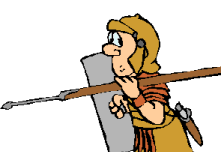
Let's go!


The past is one of the most commonly used tenses in English. It is mainly used for narratives, that is for telling about things (real or imaginary) that have already happened. There are several difficulties with using the past tense.
This is the way of speaking about the past which is most often used. There are several forms of the past simple. Here we will look at positive statements, negative statements and questions.
Positive Statements: You use these to talk about something that happened in the past.
For example:
Mike went to the cinema last night.
Here the verb is 'went'. This is a special form of the verb 'go' that is only used in positive statements about the past. All verbs in positive statements about the past have their own special form. Fortunately, for most verbs this form is made by putting '-ed' at the end of the infinitive form. For example with 'talk' we have 'talked'. However many of the most common verbs are irregular. We have seen that 'go/went' is an example of this.
Negative Statements: You use these to talk about something that did not happen in the past.
For example:
Mike did not go to the cinema last night.
Here you can see that 'went' in the positive statement has become 'did not go' in the negative. Negative statements about the past do not use the special verb form but instead use 'did not' before the infinitive form of the verb.
(Hint This is very useful, because the 'affirmative' form - which we discuss in Advanced - can be used if you forget the irregular past tense verb. So if you have forgotten 'went' you can use a 'negative' without 'not' - 'Mike did go to the cinema last night.' This might sound strange to your listener, but it makes your meaning clear.)
Questions: The form of a past tense question is the same as a present tense question, except that you change the 'Question word' to the past tense form. (See Lesson Five for Questions). So 'Do you live in London?' (present tense) becomes 'Did you live in London?' (past tense), and 'Can you swim?' becomes 'Could you swim?' and so on.
Negative questions are usually formed by putting 'not' after the question word, usually as a -n't suffix.
For example:
Didn't Mike go to the cinema last night?
However, you can also leave 'not' before the main verb.
For example:
Did Mike not go to the cinema last night?
The past continuous does not have a special form of the verb in positive or negative statements. Instead the past continuous is always formed with the auxiliary 'was/were' and the present participle (one of the '-ing' forms).
For example:
Mike was going to the cinema when he met Sally.
For a negative statement in the past continuous, we simply add 'not'.
Mike was not going to the cinema when he met Sally.
This description has been about how to form the past continuous. When you should use the past continuous will be discussed on the next page.
The past perfect is used to say which of two actions in the past came first. It is formed from the auxiliary 'had' and the past participle.
For example:
Mike had bought his ticket online before he went to the cinema.
Often the past participle is the same as the special past tense form (especially if the past form is a regular '-ed' ending) but sometimes it is different again.
For examples:
'look/looked/looked' but 'buy/bought/bought' and 'go/went/gone
To look at how we use these different tenses to talk about the past, go to the next page
If this explanation is too simple for you, look at the grammar of the past tense in the advanced section. On the other hand, you should read the grammar in the elementary section if this seems too difficult.